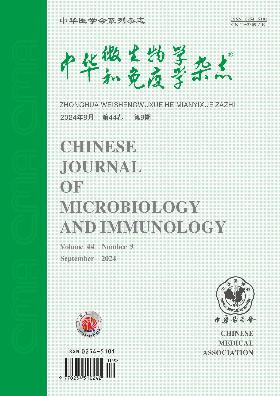Research progress in signal amplification for immunoassays
Q4 Immunology and Microbiology
引用次数: 0
Abstract
With the requirements of early diagnosis, biomarker development and functional definition, the challenge of sensitivity of immunoassay has become increasingly prominent. How to improve it to break the bottleneck has become a major challenge in the field of bioassays. Amplifying the immunosignal is the most direct method to improve detection sensitivity. Biotin-avidin system (BAS), tyramide signal amplification (TSA) and immuno-polymerase chain reaction (Im-PCR) are the most classic signal amplification techniques which significantly improved the sensitivity of immunoassays. In recent years, studies have confirmed that the sensitivity of immunoassays can be further increased by approximately three orders of magnitude with the invention of techniques including catalyzed reporter deposition-based signal amplification, nanotechnologies-based signal amplification and hybridization chain reaction-based signal amplification. Herein, we will summarize the techniques that have been developed in recent years for amplifying the signals of immunodetection and comparatively analyze their advantages and disadvantages in order to provide reference for the developed techniques transformed to clinical application and further research on ultrasensitive immunoassays. Key words: Immunoassay; Sensitivity; Biomarkers; Signal amplification免疫分析中信号扩增的研究进展
随着早期诊断、生物标志物开发和功能定义的要求,免疫测定灵敏度的挑战日益突出。如何对其进行改进以突破瓶颈已成为生物检测领域面临的重大挑战。放大免疫信号是提高检测灵敏度最直接的方法。生物素-亲和素系统(BAS)、酰胺信号扩增(TSA)和免疫聚合酶链反应(Im-PCR)是最经典的信号扩增技术,可显著提高免疫检测的灵敏度。近年来,研究证实,随着基于催化报告沉积的信号放大技术、基于纳米技术的信号放大技术和基于杂交链反应的信号放大技术的发明,免疫测定的灵敏度可以进一步提高约三个数量级。在此,我们将总结近年来发展起来的放大免疫检测信号的技术,并比较分析其优缺点,以期为所开发的技术转化为临床应用和进一步研究超灵敏免疫检测提供参考。关键词:免疫测定;敏感性;生物标志物;信号放大
本文章由计算机程序翻译,如有差异,请以英文原文为准。
求助全文
约1分钟内获得全文
求助全文
来源期刊

中华微生物学和免疫学杂志
Immunology and Microbiology-Virology
CiteScore
0.50
自引率
0.00%
发文量
6906
期刊介绍:
Chinese Journal of Microbiology and Immunology established in 1981. It is one of the series of journal sponsored by Chinese Medical Association. The aim of this journal is to spread and exchange the scientific achievements and practical experience in order to promote the development of medical microbiology and immunology. Its main contents comprise academic thesis, brief reports, reviews, summaries, news of meetings, book reviews and trends of home and abroad in this field. The distinguishing feature of the journal is to give the priority to the reports on the research of basic theory, and take account of the reports on clinical and practical skills.
 求助内容:
求助内容: 应助结果提醒方式:
应助结果提醒方式:


